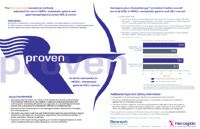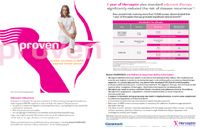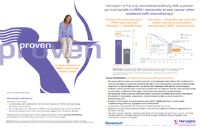A Brand Positioning Nightmare
New drug indications can be a brand manager's worst nightmare or a dream come true. The difference lies in the perspective and in the branding strategy.
I recall talking to a brand director who said to me, "I'm facing a problem. My product is receiving a new indication within the next year, and I'm worried it's going to hinder the brand more than help it."
I asked, "What is your worst nightmare for your brand?" She replied, "It's that our target will only use the drug in this narrow population, all because of its potential indication approval."

Yaron Landow
I said to her, "It's time we address your nightmare head on and turn it into one of your best dreams come true."
This challenge isn't unique for brand managers, especially in the oncology, hematology, and rheumatology arena, where one product can typically have more than one indication and multiple targets with different needs and mindsets.
When this happens to you and your brand, you should be armed with the right approach and a plan of action. This article covers four key steps you should take, along with some case studies. When we boil it down it's actually pretty simple to ensure that you take the right path.
Step 1: Case study analysis
Research previous brands that had similar issues and find out what they did. Use these case studies as guidance when thinking about what contributed to the brand's success and what didn't.
Step 2: Brand awareness—ask yourself two key questions:
Would the brand be more successful if we had one overarching brand position, or should we separate positions based on indications or different therapeutic categories?
How can we ensure our brand connects not only on the rational data points but also on an emotional level?
Step 3: Positioning workshop
Institute a full-day workshop that entails research insights, competitive analysis, positioning, and personality exercises that help you answer the questions from Step 2.
Step 4: Ask for help
This is an easy one. Pick up the phone or send an e-mail. Brand consultants with a knowledge of the therapeutic area will be happy to help you through your challenge.
Every brand has its own set of objectives and issues. These four steps may help your brand with multiple indications thrive. Each of these cases will look at similarities and differences in the areas of brand ideas/concepts, brand identity, and messaging.
Step 1: Case study analysis
It is common to see one oncology product that has several indications. From smaller brands to large blockbusters, the key is to build a brand that can be everlasting through multiple indications. The line of usage, the endpoint, and the competitive set often vary by indication, thus making any one campaign or single message hard to implement. As brands expand their usage throughout their lifecycle, what's needed is to identify the similarities and to strive to make the campaign work across indications.

Herceptin
When we look at Herceptin, a blockbuster brand for breast cancer and gastric cancer, we find that all three indications keep the concept of "proven" intact (see artwork). There is a consistent visual campaign, with the silhouette of the woman with the bow and arrow focusing on targeted therapy that succeeds whether it is for treatment in early stage or metastatic breast cancer or metastatic gastric and GEJ cancer. From an identity standpoint, where we start to differentiate in the ad is with colors. Each color represents a different indication for Herceptin.

Yet another key differentiator is with the messaging. Each indication has a different endpoint. The early stage breast cancer messaging focuses on the risk of disease recurrence; therefore, duration of therapy message is utilized. The metastatic breast cancer messaging focuses on median time to progression and median overall survival. The metastatic gastric and GEJ cancer messaging focuses on overall survival.

Herceptin succeeded with one overarching position for all its indications.
Rituxan
Rituxan differs a bit, as this brand has chronic lymphocytic leukemia (CLL) and non-Hodgkin's lymphoma (NHL) indications, as well as a rheumatoid arthritis (RA), Wegener's granulomatosis (WG), and microscopic polyangiitis (MPA) indications. Focusing on oncology, the CLL and NHL indications remain consistent from a concept perspective but begin to differentiate when focusing on the other indications. The differentiation centers on the messages, with durable response being communicated with the NHL indication and progression-free survival for the CLL indication. Where we begin to see a departure is when we cross over to the RA indication. This is where we see the branding change from one therapeutic category (oncology) to another (immunology). It seems the marketers answered the question in step two by deciding that Rituxan would be more successful with separate positions and branding for the different therapeutic categories.
Treanda
As in many classes, and especially in oncology, efficacy is a key factor in drug choice, balanced by a positive safety profile. Treanda keeps a consistent campaign/idea whether speaking about CLL or NHL. The idea is that therapy for CLL and NHL goes beyond chemotherapy to what personally motivates patients to live. Within each indication, there are different endpoints used in each communication.
For CLL, the measurement is median progression-free survival, whereas for NHL, overall response rate is used. While the messages differentiate to help strengthen each indication, the overall idea remains strong to help Treanda sell the brand. Consistent branding and positioning was chosen across its indications.
Oncology best-in-class brands
When looking at these top oncology brands that have been successful in marketing, we find they all trend toward consistent branding across indications (typically within the same therapeutic category), with tailored messaging by indications, of course.
Step 2 and 3: Brand awareness and positioning workshop
This is where we dive into the positioning workshop. You and your team will want to institute what we call a Firestarter branding workshop. This requires the proper prep work, including studying the cases in Step 1. You will want to define what elements to use as a baseline; they should be in these areas:
What are the customer's passions? Delve deep into all the research to pull out the key emotional, diagnostic, treatment, and prescribing insights along with beliefs around your brand and your competitors.
Perform a full competitive analysis. Analyze clinical and promotional messages to understand what "position" your competitors are trying to own.
Your own brand is what's going to move minds and build loyalty. At this point, delve deep into the brand's features, benefits, data, and anything else it offers.
With this background work completed, the workshop would entail discovering a rational and emotional connection for the brand and the customers. One exercise can explore every potential avenue that the brand can own. Remember, there are hundreds of different ways to position—by attribute, benefit, cost, patient type, line of treatment, etc. The key is to find an exercise that allows you to uncover each potential avenue in a timely manner—this is a simple one- to two-hour exercise, not a week's worth of exploring. Another critical part of the workshop day is a personality exercise; one that allows you to explore how your brand would behave, as that is critical to gaining an emotional connection with the audience. Again, this is a simple one- to two-hour exercise.
This one-day workshop will have you seeing the writing on the walls (literally) for the brand.
Step 4: Ask for help
Workshops are most successful when you collaborate with experts in their discipline. The workshop should include all disciplines: marketing, medical, legal, sales force, and agency partners. Let's remember, the more you talk through your nightmares and fears, the higher the chance that you can turn them into a dream come true.
Don't let a future indication approval be your brand's nightmare.
Yaron Landow is SVP, Drector of Strategic Services and Business Development, Flashpoint Medica. He can be reached at Yaron.Landow@flashpointmedica.com

The Misinformation Maze: Navigating Public Health in the Digital Age
March 11th 2025Jennifer Butler, chief commercial officer of Pleio, discusses misinformation's threat to public health, where patients are turning for trustworthy health information, the industry's pivot to peer-to-patient strategies to educate patients, and more.
Navigating Distrust: Pharma in the Age of Social Media
February 18th 2025Ian Baer, Founder and CEO of Sooth, discusses how the growing distrust in social media will impact industry marketing strategies and the relationships between pharmaceutical companies and the patients they aim to serve. He also explains dark social, how to combat misinformation, closing the trust gap, and more.